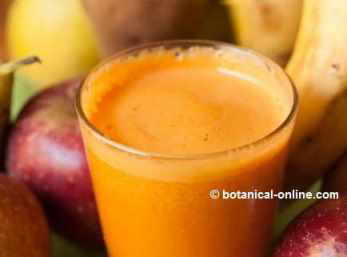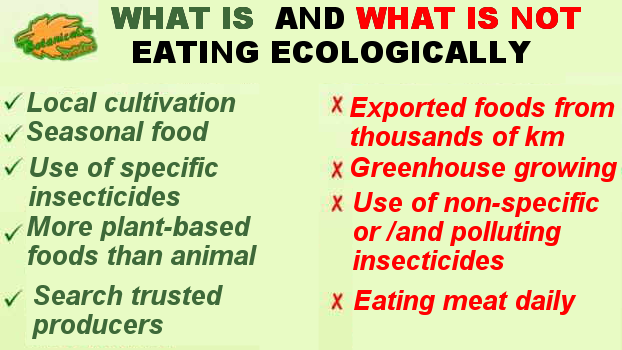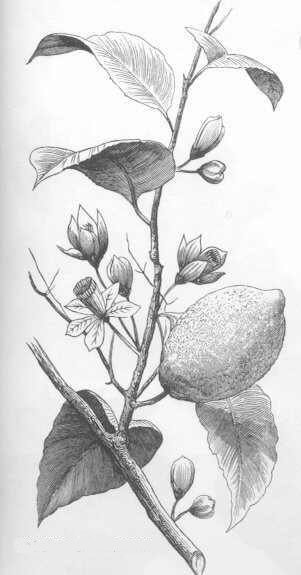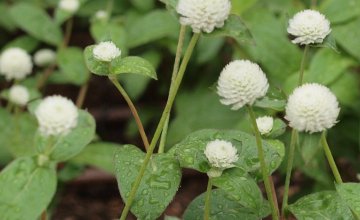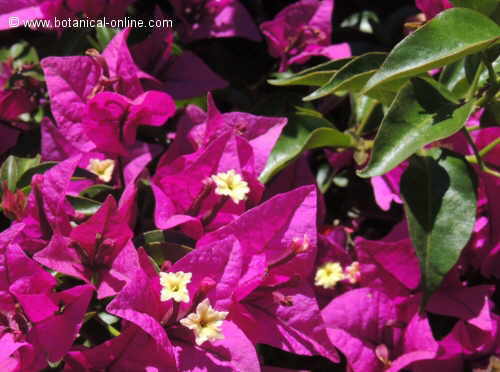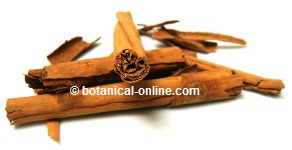Contents
HOW IS GREEN TEA PRODUCED?
From tea harvest to tea factor
Only the young shoots of the adult plant of tea (from 3-4 years) are harvested. The tender shoots are hairy, and are called ” Pekoe ” meaning ‘ fluff ‘ in Cantonese.
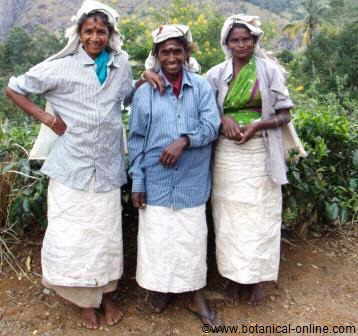
In Asian countries producing tea, the harvesting is done by women who have learned the craft of traditional form. They wear a cloth bag on his head, where they put the buds they collect. Manual harvesting guarantees the perfect condition of the leaves, which improves the quality of tea.
It is important to prevent crushing or damaging the leaves, as they oxidize and lose some of its properties along the way. For this reason, tea harvest must be carefully and necessarily manual.
During harvesting and transport to the tea factory one should not spend too much time, because this is a factor that determines the quality of the infusion.
The tea should reach the factory in perfect condition, fresh and in the whole leaves.
In the tea factory
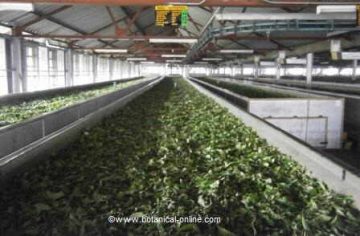
The tea factory is a building of 4 or 5 floors where they treat the tea leaves to make the delicious tea that we buy in the shops and markets. In Southeast Asia. Some of these factories are buildings built by the British, as in India or in Sri Lanka.
The tea manufacturing process is carried out ” from the top floor to the bottom.” That is to say, tea process begins in the upper floors, and through channels, passes down to the lower floors for further processing. The tea produced by these factories will be sold in auction houses or tea brands, that will be responsible for commercialization.
How is tea produced?
The tea leaves go through various stages during the process of industrialization. These stages are:
- Withering/wilting
- Rolling /shaping
- Screening
- Fermentation or aeration (for black tea)
- Drying
- Classification
Withering Tea
Withering involves removing moisture and firmness of fresh tea leaves. This process is necessary for the next step of rolling, because without this process leaves would break and tea would lose its quality.
The bags with tea leaves come to the factory, where they are quickly emptied into large containers, located on the upper floors of the building. These containers have metal grids on the bottom so that the leaves are aerated as much as possible, and a warm air stream flowing between them helps perform the process, which may last between 12 and 14 hours.
Different types of wilting:
- Light wilting (over 50 % humidity)
- Medium wilting (50 % moisture)
- Severe wilting (40-45 % moisture)
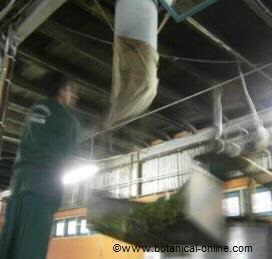
The most optimal is medium withering that provides good color and flavor. Light withering infusions are bitterer, whereas severe withering gives very strong flavor teas.
When this process ends, the tea leaves pass the lower floor of the factory, where the following processes occur.
Rolling Tea
Tea leaves are introduced into giant containers with blades inside, which make tea leaves to become wound between themselves.
The pressure on the blade squeezes their juice, making all their components get into contact. This will give tea its characteristic flavor (enzymes released on this process will produce tea oxidation). This process also gives the ” twisted ” form of tea leaf or coiled form that can be seen in packaged teas. It usually lasts from 30 to 40 minutes.
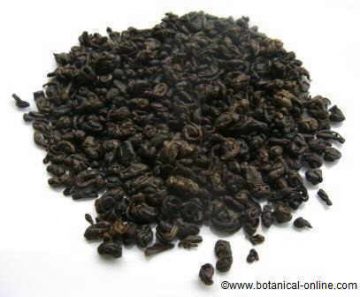
This rolling process can be seen in the leaves of all high-quality teas we buy. For example, Gunpowder tea is a type of tea where you can see the leafroll mentioned of in this section.
Tea screening
When tea leaves leave the rolling machine, they appear in particles of different sizes. Screening machines, consisting of sieves, classify theses particle by size.
On the first roll, the leaves with a smaller size correspond to the younger tea leaves buds, which are the best-quality ones. Middle leaves correspond to the second leaves of the plant shoot an so on.
Sized particles pass directly into the fermentation room, whereas larger ones repass the winding process. These are the ones with a lesser quality. Thus, homogeneous leaves fermentation is controlled.
HOW IS BLACK TEA AND SEMI-FERMENTED TEA PRODUCED
Fermentation of black tea and semi-fermented tea
Green tea does not pass any process of fermentation. This is only performed for black tea and semi-fermented tea :
Tea fermentation involves extending the tea leaves on trays in a room for 2 hours with controlled temperature, humidity and aeration . During this time, the polyphenols are oxidized and leaves acquire first a brownish color (semi-fermented tea) and later black color (black tea).
This process is not actually a fermentation because not microorganism (bacteria) act. Recently the term ” fermentation ” is being changed by the term “aeration” because the last one is more correct.
This change of terms is also due to the fact that, in Muslim countries, it was believed black tea, being a ” fermented plant”, might contain alcohol, which is not true.
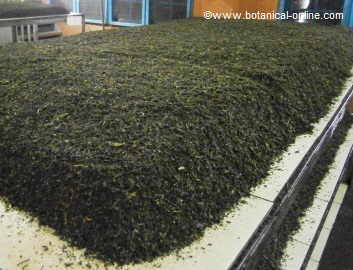
During this “venting” some components (polyphenols) from the leaves oxidize, producing thearubigins and theaflavins. Caffeine (= theine) is realized.
The higher the fermentation, the higher the caffeine content and the more stimulating the tea results.
This process is stopped by means of subjecting the leaves to heat for 20 minutes (drying).
Tea drying
Drying slows drying of the components of the tea leaves and all chemical reactions. This process is performed under controlled time and temperature conditions which ensure the quality of the tea, because, for example, aromas are lost in the case of an excessive drying.
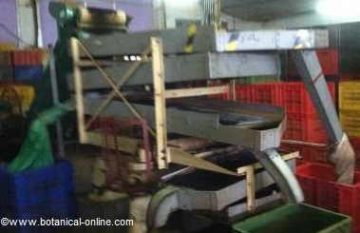
In drying, leaves are almost completely dehydrated, oxidative action of enzymes freezes completely ( fermentation is stopped), the majority of essential oils that tea contains are lost (volatilized by heat); acidity increases; coloring occurs and leaves appear much darker.
The machine that handles this process is constituted by moving belts which pass through a circuit of hot air fans. Leaves undergo 20 minutes at 90 º C (200 º F). The moisture content of the tea leaves coming out of this process is 4-7 %.
Black tea that has been oxidized and fermented for 2 hours, this process slows down and results in very dark tea leaves . In green tea, the leaves are green in color since they retain its polyphenols, because it has not been subjected to the previous process.
Tea Classification
Tea lovers may already know that there are over 16 types of tea. Different types of tea are largely dependent on its quality, and this of its size. Thus we can say that:
– Particles of larger size tea have a delicate and soft taste.
– Medium particles are considered to be of better quality, with a balanced flavor.
– The smallest particles (“dust”) are the worst quality and taste strongly. These are to be found in most commercial low cost tea bags.
This type of separation by size, which determines the type of tea is called “separation in degrees “.
Mechanical strainers are responsible for performing the separation of particles in black tea which are classified into different classes.
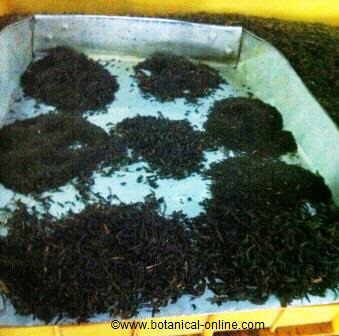
Photo of black tea grouped in different sizes
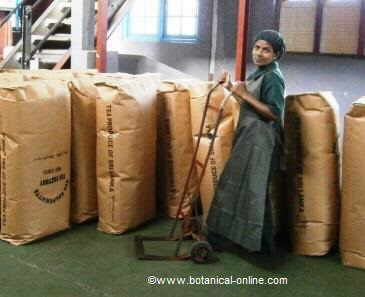
Photography of tea warehouse, packed in sacks, with a worker
From the tea factory to the teapot
The next step is the storage and packaging of tea. The tea is packaged in bags of 40-50 kg. and brought to the city, where it is auctioned.
At auctions, the teahouses buy the product that interests them, depending on quality and / or price. Then, they package it with their brand and sell it to the shops and supermarkets where we buy. The main sites involved in these auctions are:
- China is the largest producer of tea in the world. (Shanghai, Foochow, Canton.)
- Japan: Shimizu and Shizucoa.
- Taiwan: Keelung, Taihoko.
- India: Calcutta, Cochin.
- Sri Lanka: In the city of Colombo and Trincomalee
- Java: Djakarta.
- Sumatra: Medan.
- In Europe, there are tea auctions in Amsterdam, Hamburg and London.
- In Africa: Kenya (Nairobi)
| Related information on green tea: |
![]() More information on tea.
More information on tea.

